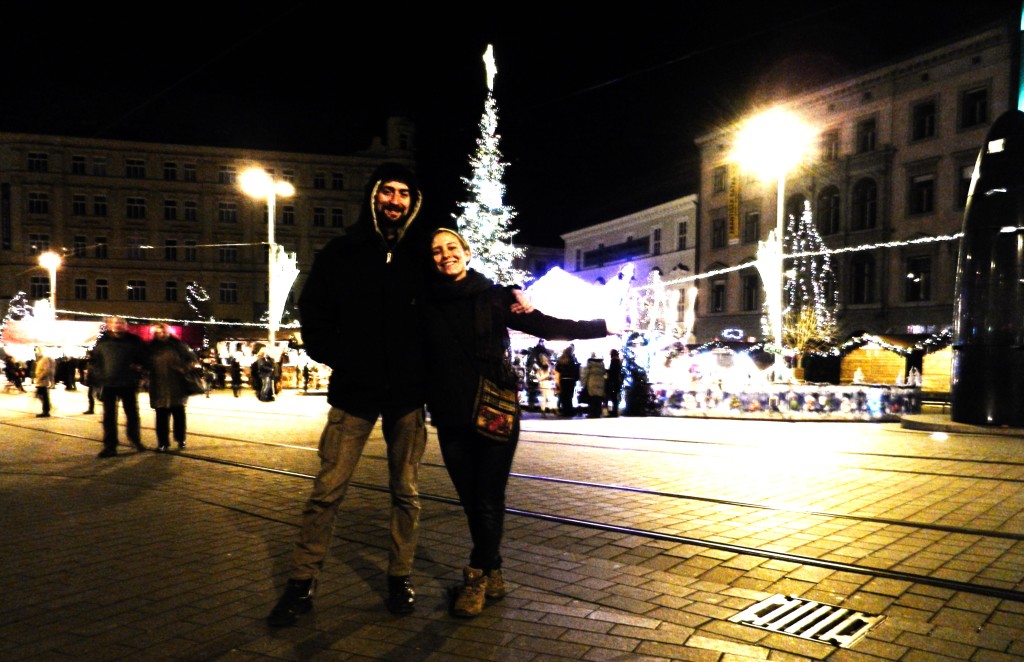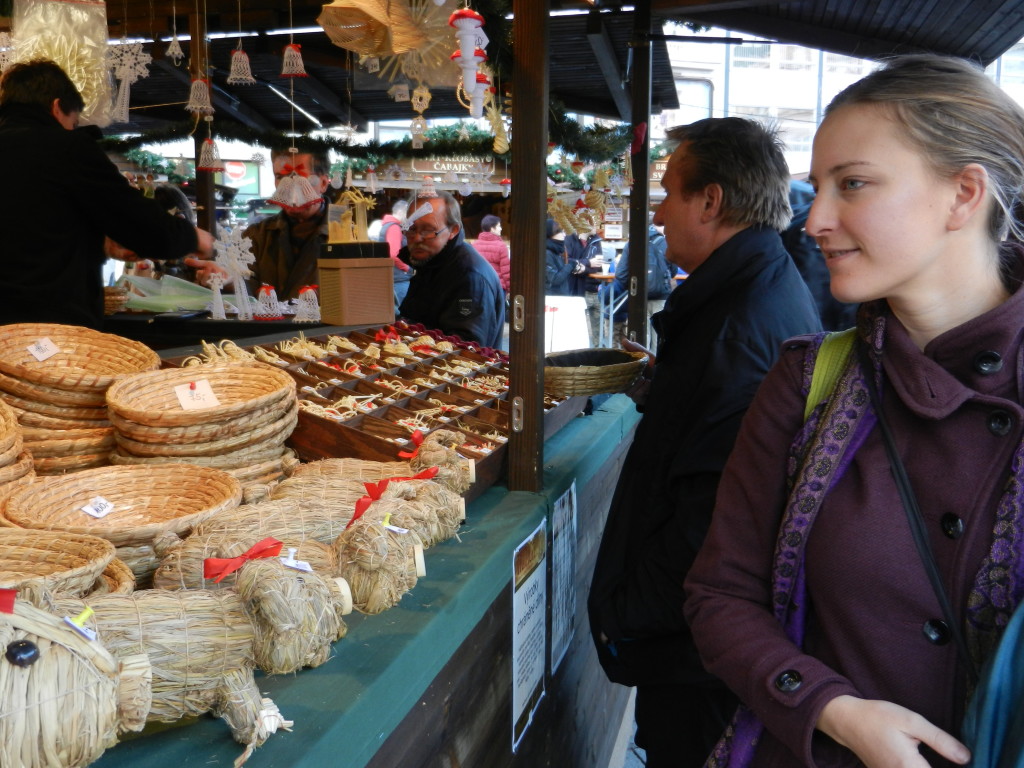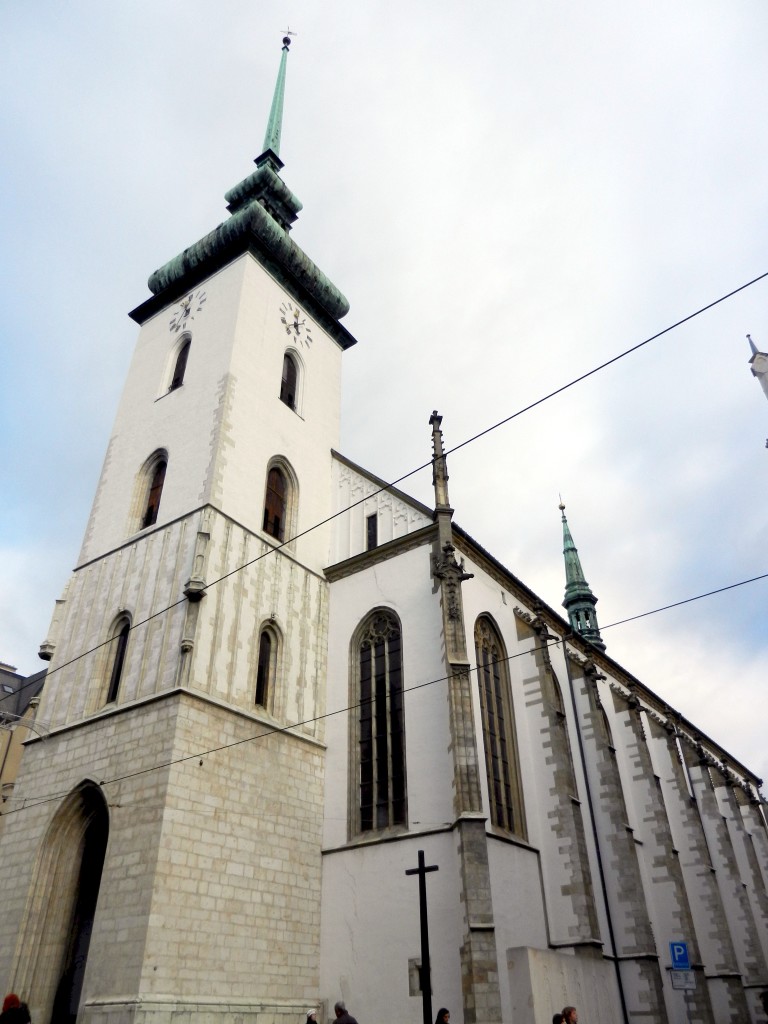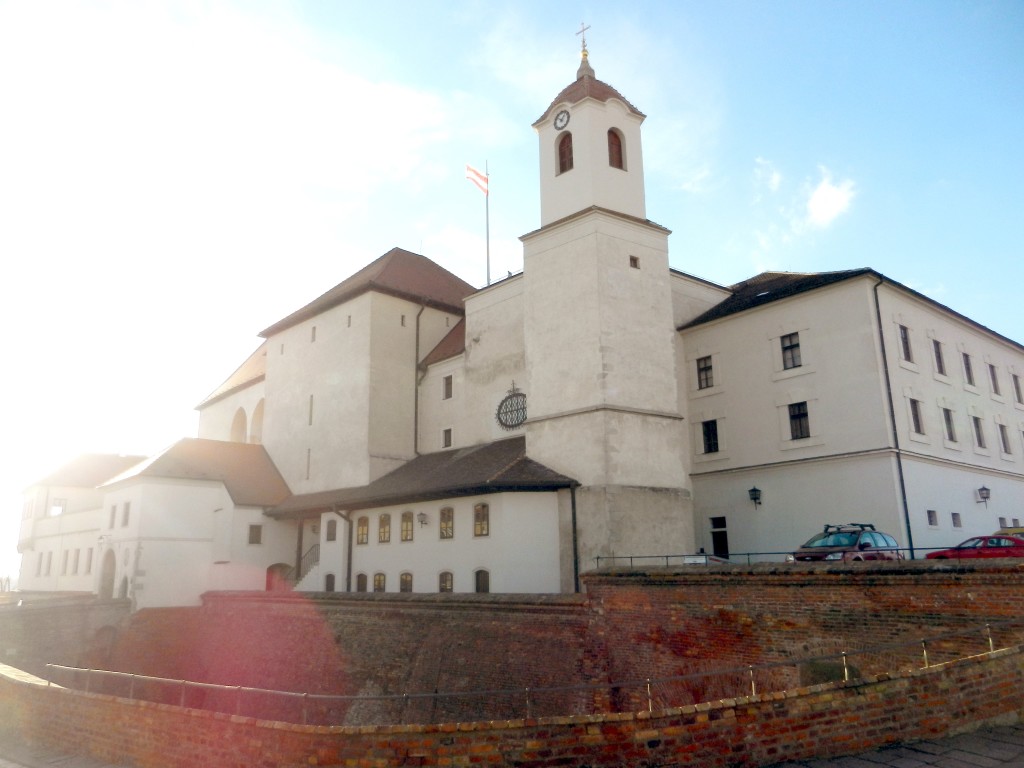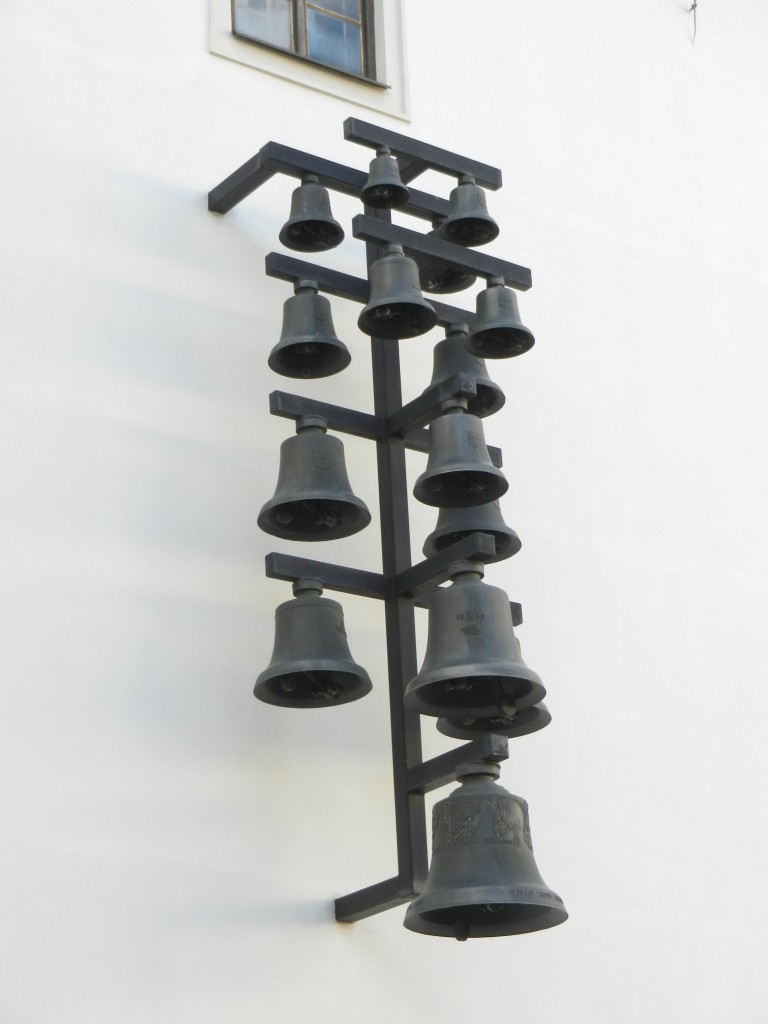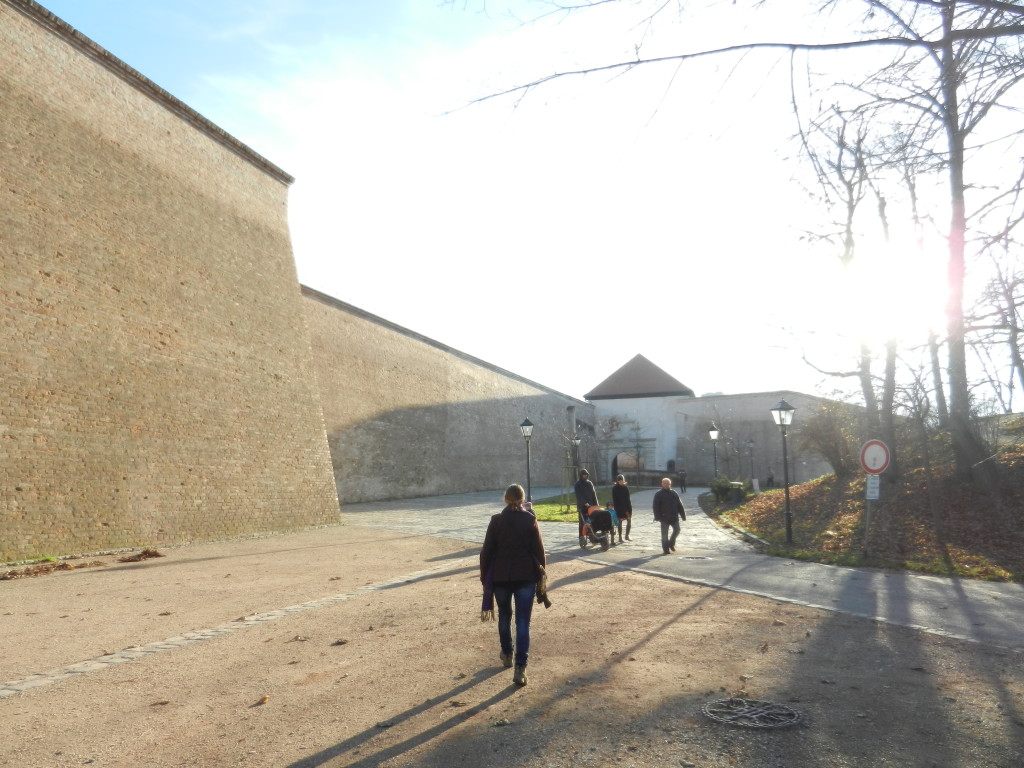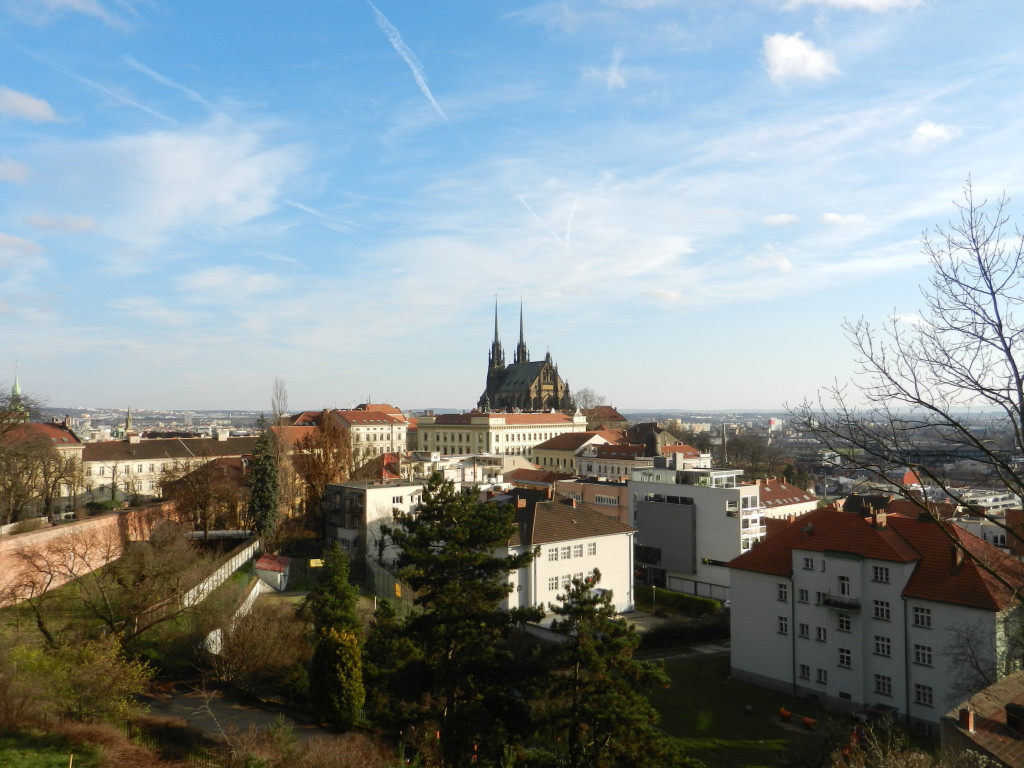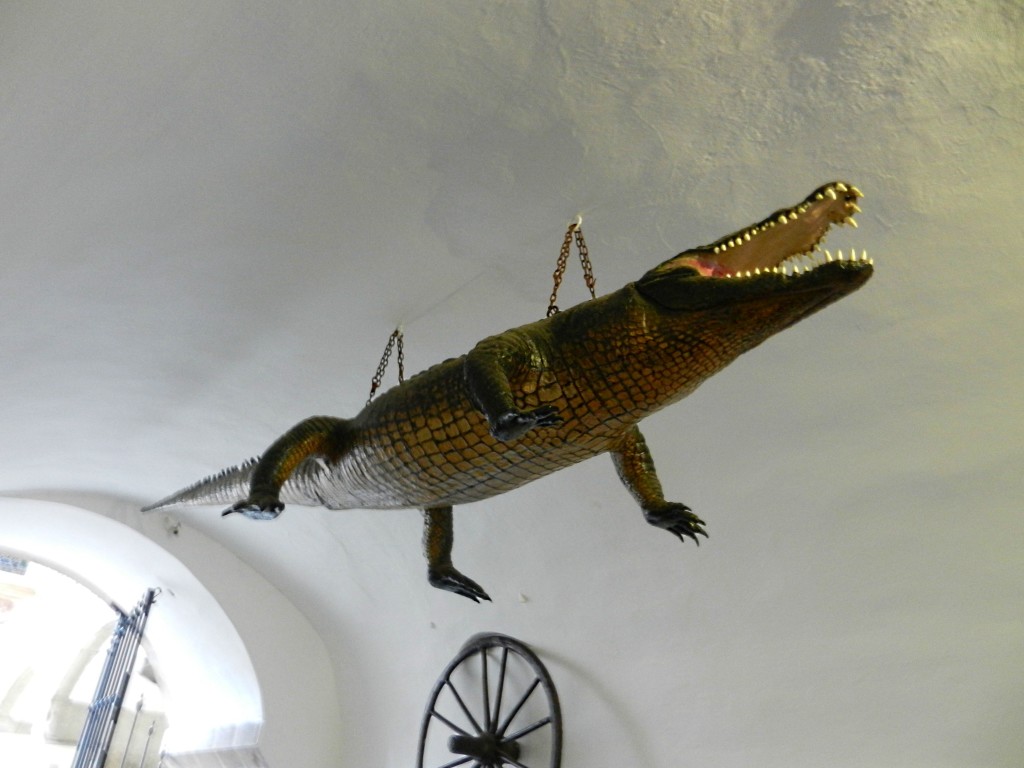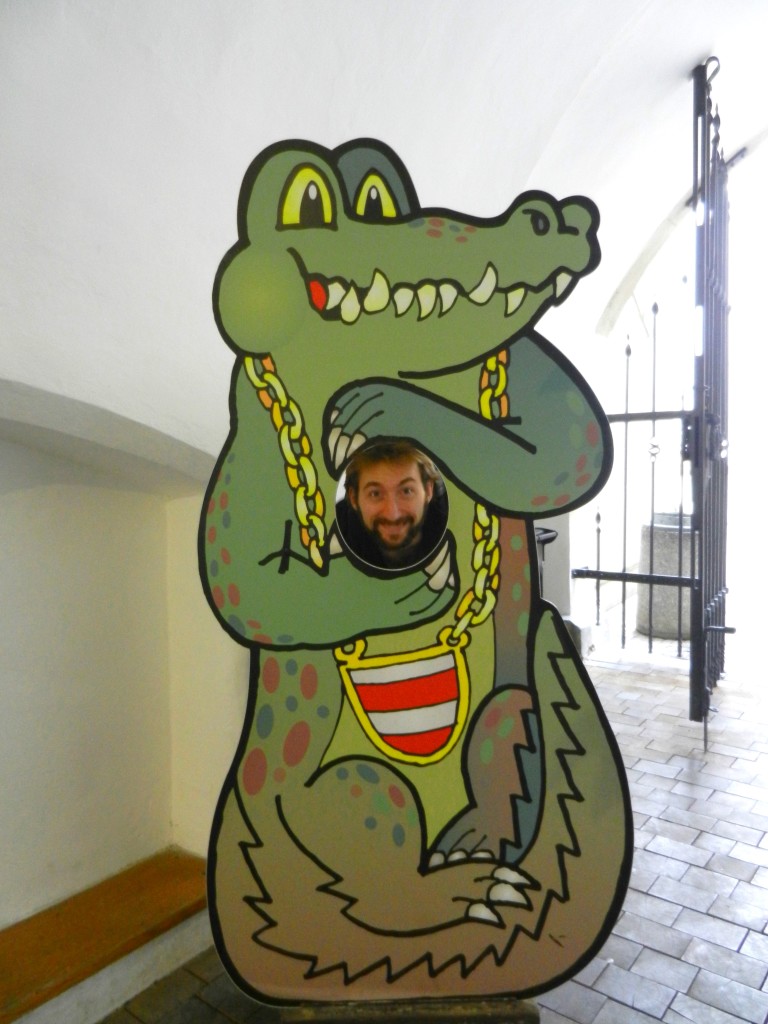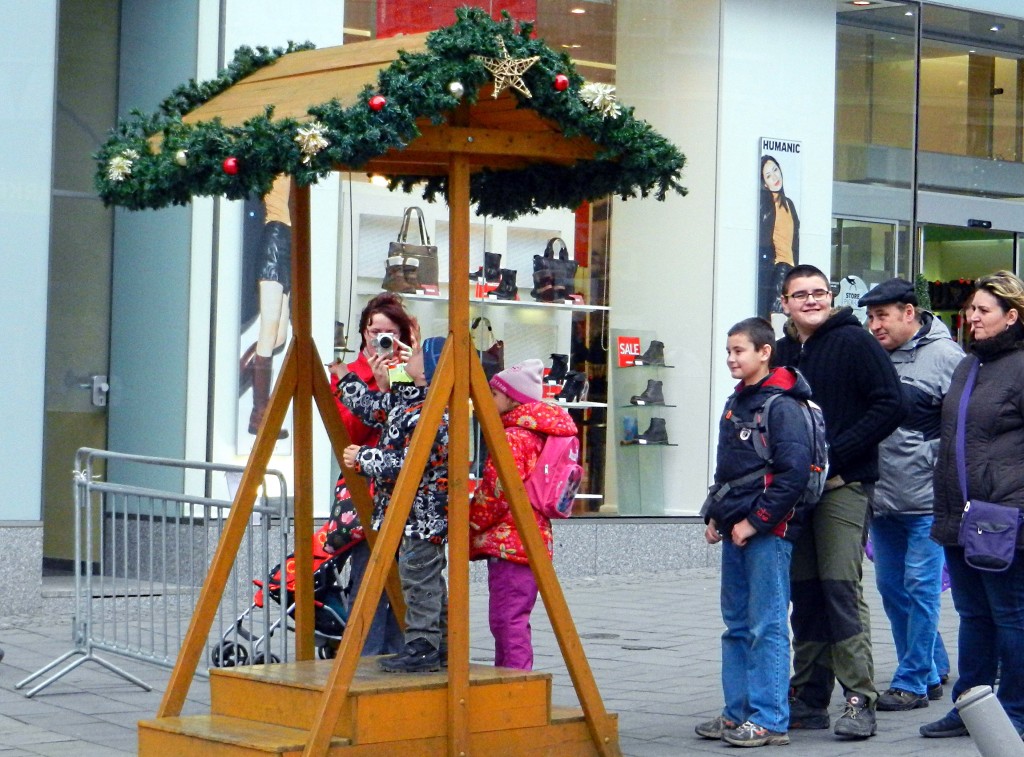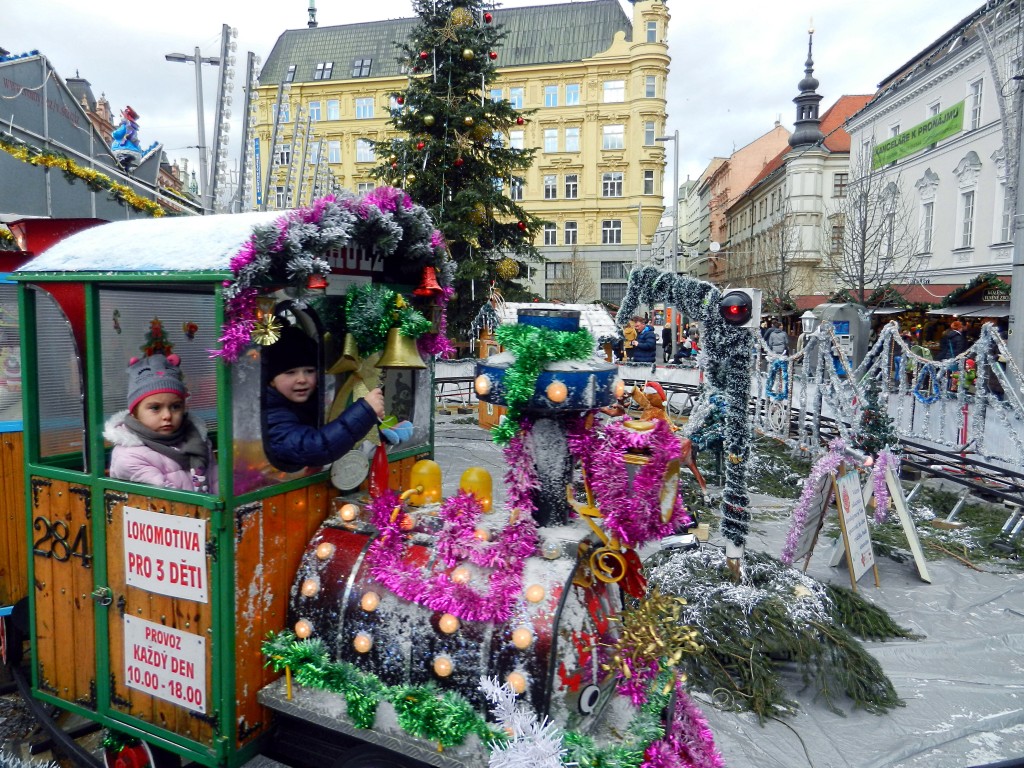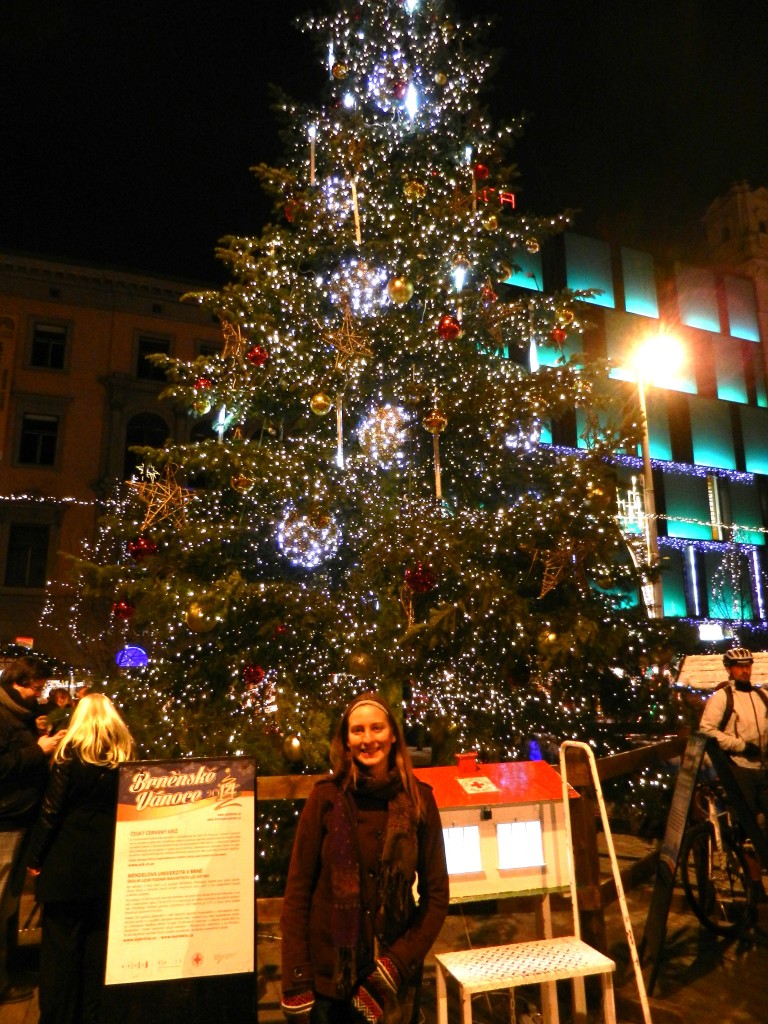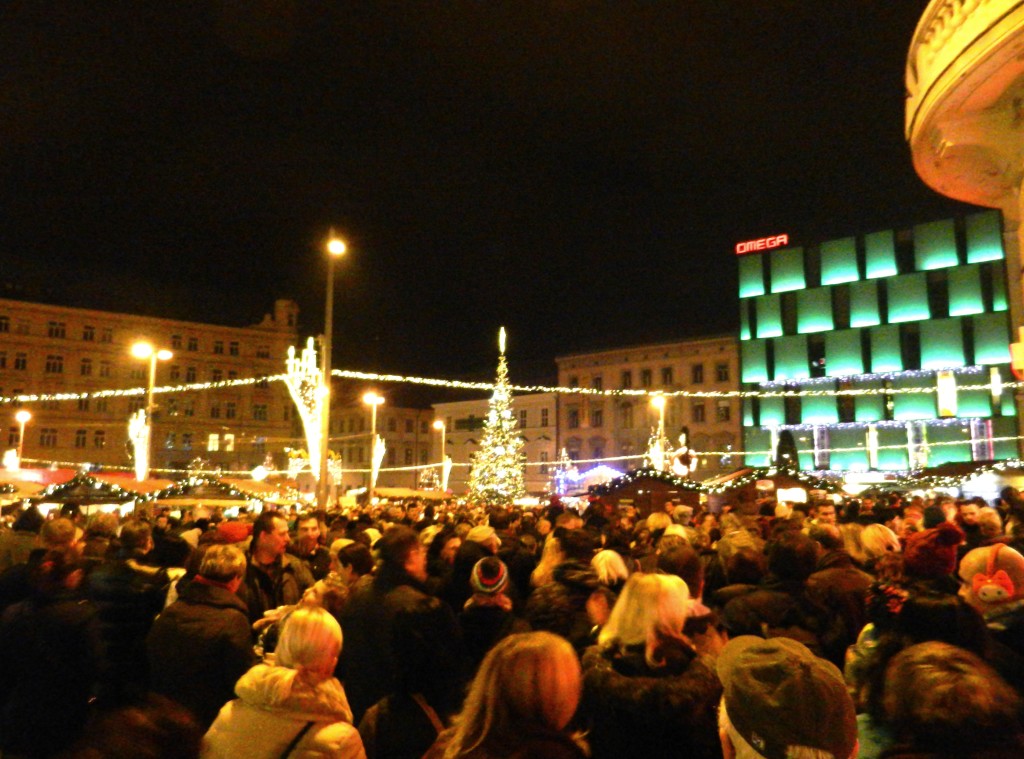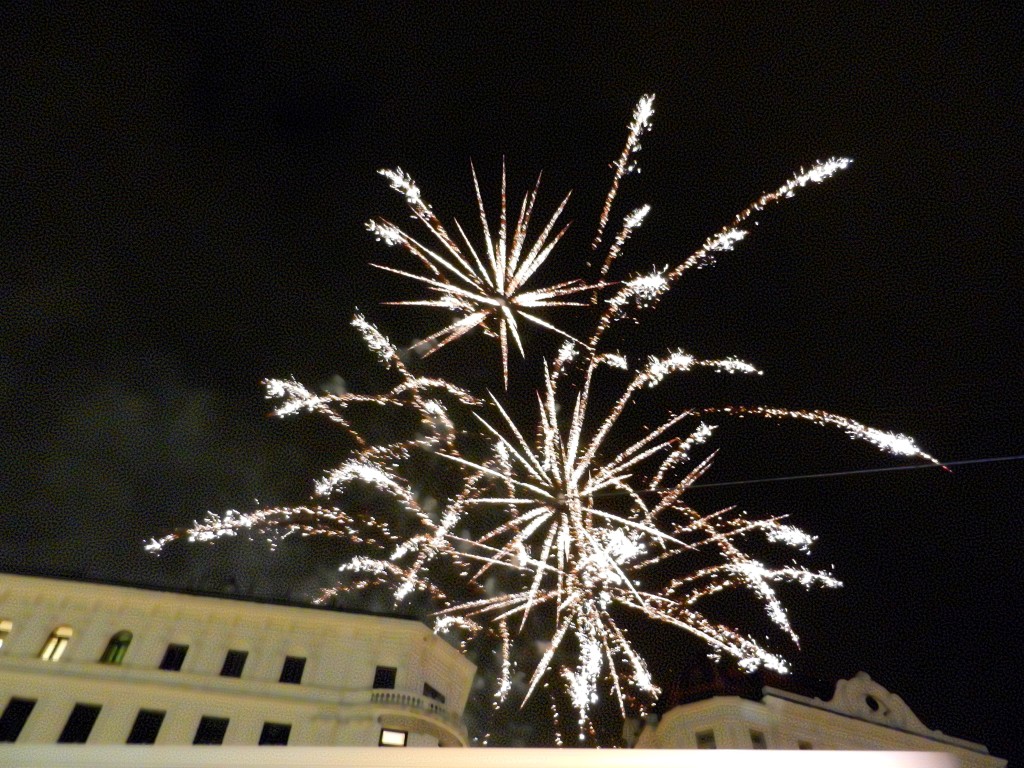Having a weekend off from babysitting duty in Vienna, we were trying to figure out the best place to spend our Christmas holidays– and it had to be somewhere cheap because Austria was killing us! A fine thing about being in central Europe is that you’re rarely more than a couple hours away from the nearest border, Austria itself being closed in at all sides by Slovenia, Hungary, Slovakia, Germany and the Czech Republic (don’t forget Liechtenstein!). Surveying our choices, we decided it would be fun (and cheap) to take a couples’ vacation up to Brno, Czech, only a couple hours by bus from Vienna. Czech is a country we’ve visited before on our trip to Prague and Karlovy-Vary, and we were more than happy to return to its loving embrace.
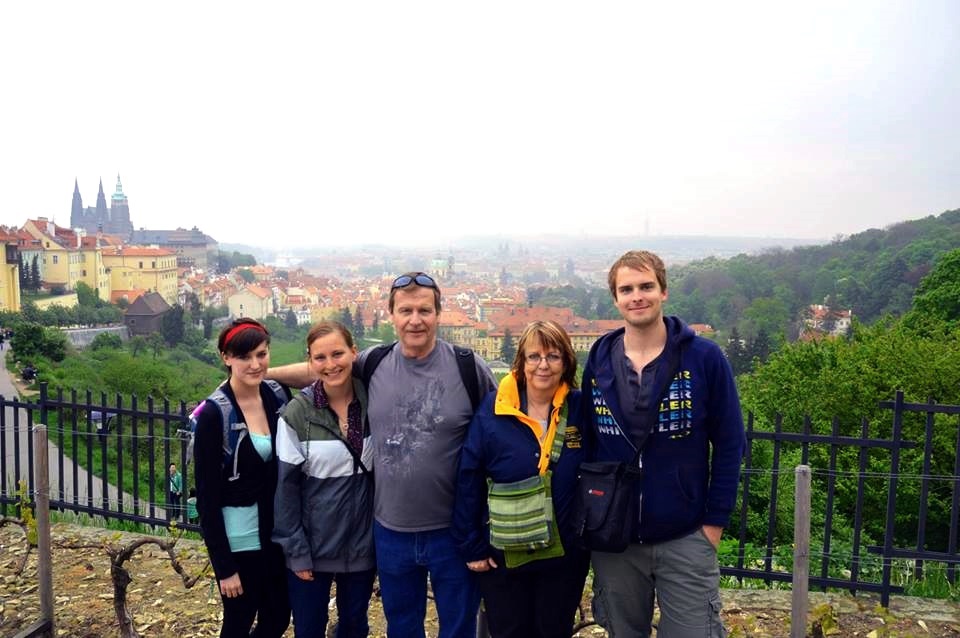
When we arrived on December 23rd we could already feel the whole city of Brno winding down for Christmas, so we rushed to see what attractions we could before everybody closed up shop.
Brno’s Freedom Square (Náměstí Svobody) is the oldest, most whimsical part of the city. This cobblestone arena is encased by many detailed and colourful baroque-style buildings with several church steeples peeking over the top from a short distance away. Every year Freedom Square hosts concerts, events, markets, and while we were there, it was chocked full of Christmas-bling.
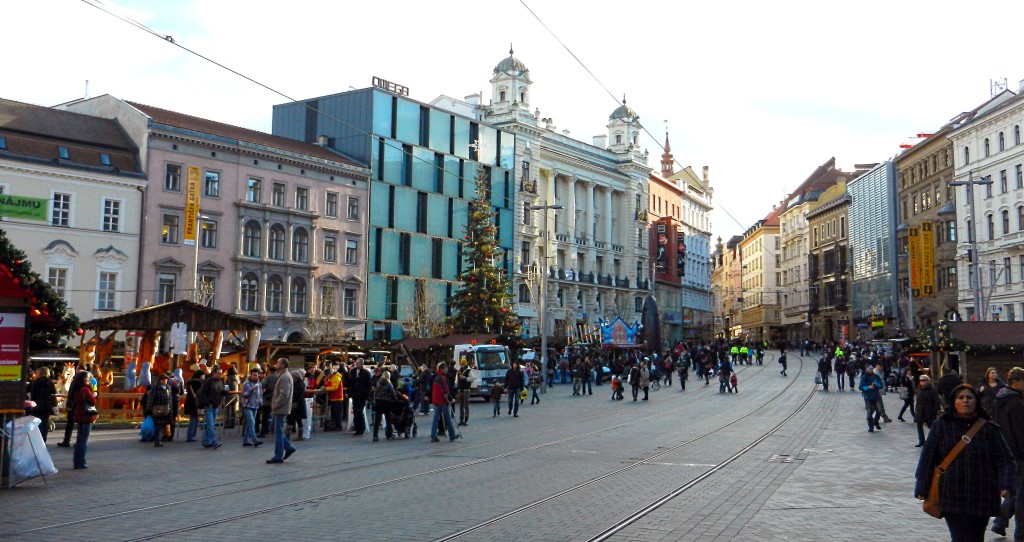
The Astronomical Clock is a “peculiar” obelisk standing erect near the centre of Freedom Square– a black, 6-metre tall, torpedo shaped mechanism that apparently tells time. I stood and stared at it for three minutes, trying to decipher its mysteries and understand the logic behind its time-telling, but to no avail. After researching a bit more about this apparatus, I still have no idea on how it actually tells time, and I have grown increasingly certain that nobody else does either. I did discover that, at 11:00 every day, this baffling work of modern art spits out a glass marble, so that’s something, right? Please read this hilarious article on the unveiling of Brno’s 12 million crown Astronomical Clock: “Hated and admired, Brno’s Orloj lays a claim to fame”.
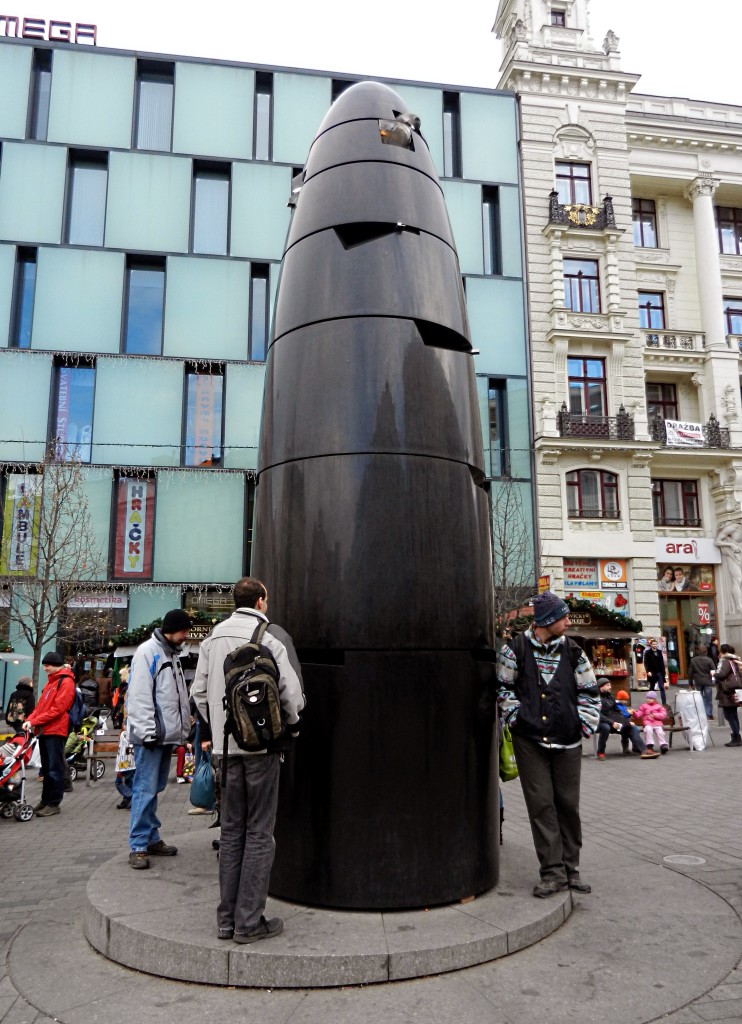
If you happen to visit St. James Church, just a short walk from Freedom Square, you cannot miss a venture into the church’s crypts underneath. The frequent plague epidemics in Brno, during the middle ages, over-filled cemeteries and forced the people to exhume old graves and store the bones elsewhere. The Ossuary of St. James Church holds the remains of over 50 thousand people which makes it the second-largest ossuary in Europe, after the Catacombs of Paris. With only a seven dollar entry fee, Brno Ossuary’s stacks of old limbs and skulls is something you wouldn’t want to miss (if you’re into that sort of thing). I’d say that’s seven dollars well spent!
Once a dreaded prison, Špilberk fortress is now a museum open to the public and one of the most valuable monuments in Brno. Founded in the 13th century as a royal castle for Czech rulers, Špilberk was eventually converted into a dungeon for the toughest and most dangerous of criminals in the Austro-Hungarian empire. Špilberk prison was famous for its cruelty, the torture of its prisoners, and for centuries it inspired fear in the citizens of Brno. Nowadays, in the summer, the castle courtyards come alive with various cultural events and sport competitions. While we visited, however, it was quite empty, though the chime of its 15 bells was cheerful and the view of the city below was spectacular.
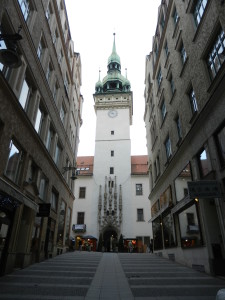
Within the Brno’s Old Town Hall are three special objects, each of which are rather unusual but have a interesting story attached.
The first strange object we noticed was part of the Gothic-style detailing decorating the front gate of the town hall. Four, carved obelisks rise straight up from the entryway, but the fifth middle column looks twisted and deformed. We’re not really sure why the stone-mason, Anton Pilgram, carved such a goofy piece, but as the story goes it was an act of vengeance against the “crooked” city council members who wouldn’t give him an advance payment.
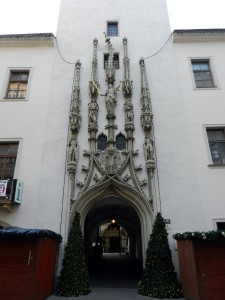
The second object which seemed out of place was a single, wooden wagon-wheel hanging on the wall. 400 years ago a master craftsman, from the nearby city of Lednice, made a bet with his friends that he could chop down a tree, make it into a wheel, and roll it 45 kilometers to Brno in a single day. This man’s name was Jiří Birk, and it is said that he succeeded in this impossible race against time, winning the bet. To celebrate his memory and to challenge themselves, teams race from Lednice to Brno with a wooden wheel every October. The wheel hanging in Brno’s town hall is said to be the original one crafted by Jiří Birk.
The third oddity, one that’s hard to miss, was the massive carcass of a “dragon” hanging from the ceiling. The legend surrounding this monster reminded me, in particular, of a story I learned about while visiting Krakow: “King Krakus and the Dragon“. In fact, as far as I can tell, the two tales are pretty much identical. Whichever came first, the essence of both stories involves a terrible, reptilian monster that plagues the innocent villagers by eating their virgins and whatnot. A clever stranger from far away comes up with a plan to poison the dragon by stuffing a sheep’s carcass with caustic lime. After the beast gobbles the bait, it runs to the nearest river and gulps it down to quench the burning in its belly, and continues to do so until its stomach pops like a water balloon.
As it turns out, the “real dragon” hanging in the town hall is actually a (rather large) carcass of a crocodile, which could have played the role of a dragon back in those days, when the world was mysterious and frightening. Because of this popular town mascot, crocodile motifs are common in Brno. The town’s rugby team is named after the creature, and a “krokodýl” is the local stuffed baguette–very tasty, I’m sure.
While we were so busy touring the city Christmas Eve had arrived, and though the shops were closing, Freedom Square was coming to life. Christmas carollers were singing hymns on stage, a children’s train ride was whizzing around at reckless speeds, and there was a general buzz about the place (probably from all the spiced wine). We noticed a ludicrously long line of people trailed behind a miniature gazebo, from which hung a brass bell. These hundred-or-so Brnovians had been waiting for hours– just so that they could have their turn to ring the bell and make a Christmas wish to Ježiško, baby Jesus.
As night fell over Freedom Square the Christmas lights glowed in a dream-like quality, and we were gleefully startled by a vast array of fireworks that marked the yule-time season. Being halfway across the world from Canada this was already the second Christmas we’ve missed away from our families and has been the season where we’ve both felt the most homesick. Despite our wistfulness, the city of Brno pleasantly distracted us with its interesting attractions, fun stories, and celebrations during our Christmas together, so far away from home.
